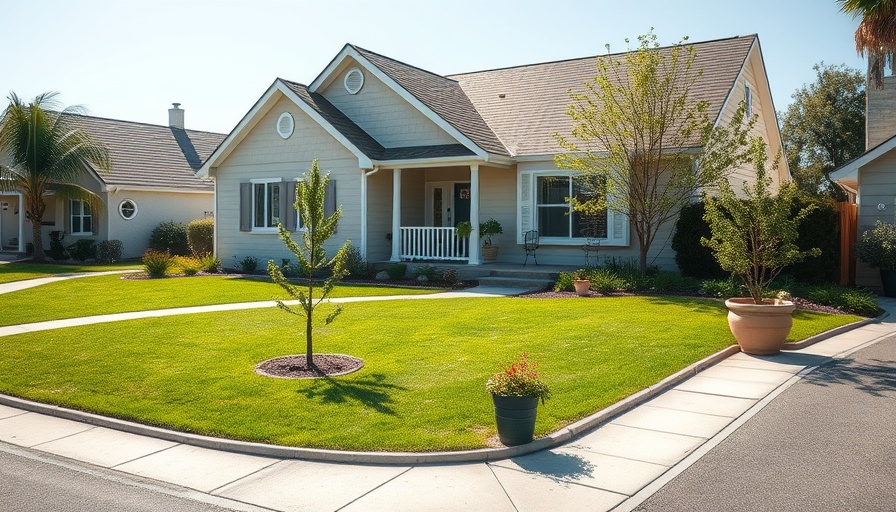
Reclaiming Time with Low-Maintenance Lawn Solutions
For homeowners yearning for a picturesque lawn without the relentless upkeep, low-maintenance lawn landscaping design offers a refreshing perspective. As highlighted in the recent video on transforming outdoor spaces, the intersection of beauty and convenience allows homeowners to enjoy their backyards instead of laboring in them. By implementing strategic decisions regarding plant selection, irrigation, and hardscaping, you can create a serene outdoor environment that invites relaxation over chores.
In LOW MAINTENANCE LAWN LANDSCAPING DESIGN IDEAS, the discussion dives into innovative strategies for creating manageable and beautiful outdoor spaces, exploring key insights that sparked deeper analysis on our end.
Why Low-Maintenance Landscaping Matters
Choosing low-maintenance landscaping is akin to investing in your leisure time. It saves hours of rigorous lawn care while being cost-effective in the long run. Imagine shedding utilities from excessive watering or cutting down on pricey fertilizers—this approach supports a sustainable future. As highlighted, adopting eco-friendly practices such as reduced chemical use benefits not only your wallet but also the planet.
Top Low-Maintenance Lawn Ideas to Inspire You
Transform your yard with several innovative ideas from virtually hassle-free greenery to stunning artistic expressions: Instead of traditional grass, consider:
- Artificial Turf: This option brings a flawlessly green lawn year-round without the burdens of watering or mowing, making it ideal for busy homeowners.
- Drought Tolerant Planting: Use native plants that flourish in your climate, ensuring vibrant color and texture with minimal effort.
- Rock Gardens and Zeroscaping: By surrounding artificial turf with aesthetically pleasing rocks and minimalistic plant choices, you create a stunning yet functional space.
Enhancing Aesthetics Beyond Grass
Your yard isn't limited to traditional landscaping. Sophisticated touches such as integrated lighting can accentuate the beauty of a low-maintenance garden, revealing the intricacies of your design after sunset. The addition of decorative items like planters also allows for personalization without compromising maintenance ease. As discussed in the video, smart choices in design can significantly elevate your outdoor space, transforming it into a welcoming refuge.
Common Misconceptions About Low-Maintenance Landscaping
Many believe that opting for a low-maintenance garden equates to a lack of character or visual appeal. However, the truth is that with thoughtful plant selections and strategic hardscaping, it’s possible to cultivate a breathtaking landscape devoid of exhausting upkeep. It’s about making meaningful decisions—just as the video suggests, often less really is more.
Getting Started with Your Low-Maintenance Landscape
To embark on this rewarding journey of landscape transformation, focus on heartscaping elements such as patios and walking paths that complement your home’s architecture. Combine these with drought-resistant plants and generous use of mulch to suppress weeds and retain moisture.
By understanding how to effectively design a low-maintenance lawn landscape, you can turn your outdoor space into an oasis that offers tranquility and charm. Explore the strategies shared and visualize weekends spent enjoying rather than laboring. Remember, the future of your outdoor space is in your hands—make it beautiful, sustainable, and as low-maintenance as possible.
Take the First Step Toward Your Dream Yard!
If you’re ready to revamp your yard but unsure where to start, consider how these low-maintenance ideas can fit into your outdoor vision. Take action now and reclaim your weekends while indulging in the serene beauty of your personalized landscape. Explore more ideas and inspirations and share your thoughts on what you envision for your ideal space!
 Add Row
Add Row  Add
Add 


Write A Comment